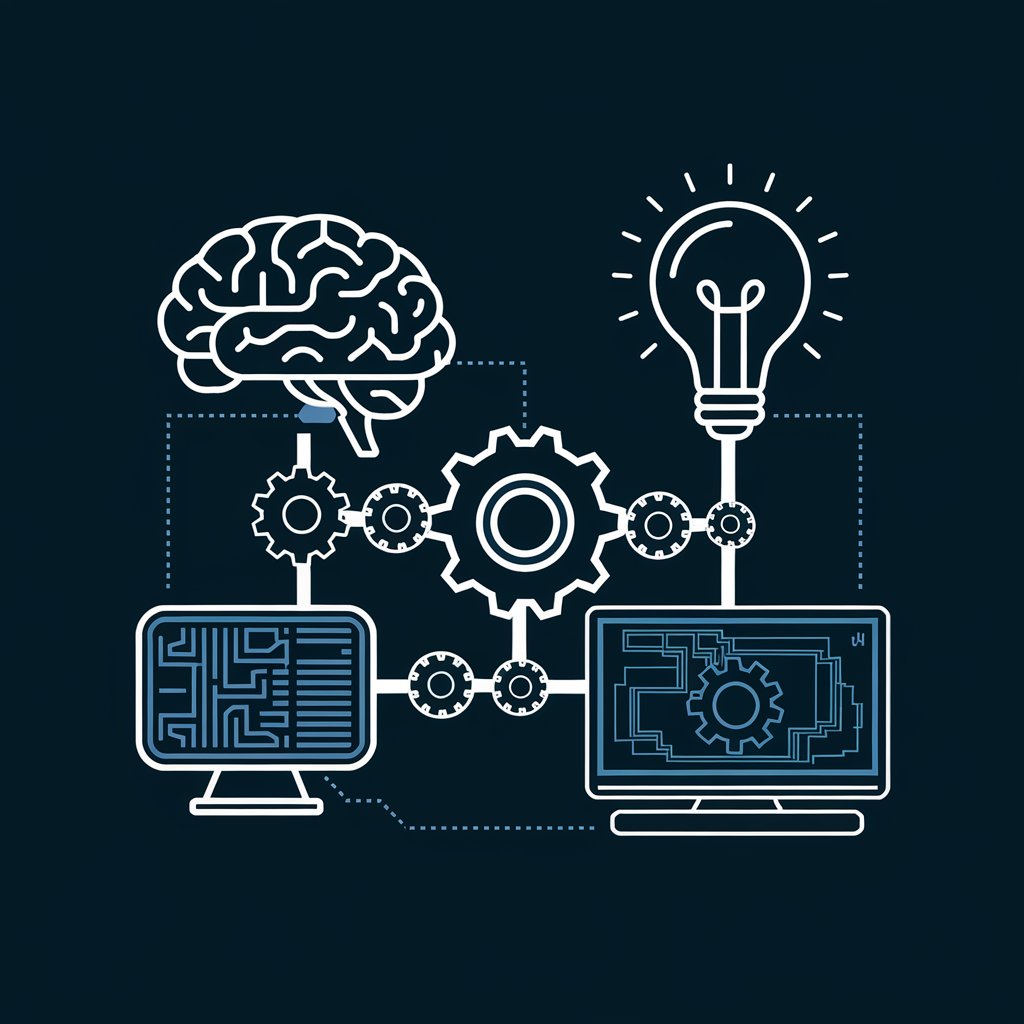Data Governance and Compliance: Safeguarding Data Security and Privacy

Strong 8k brings an ultra-HD IPTV experience to your living room and your pocket.
Table of Contents
- Introduction: The Need for Data Governance
- 1. What is Data Governance and Compliance?
2. Data Governance as Compliant
3. Data Governance and Compliance
4. What Constitutes Good Data Governance
5. Regulatory Framework Which Influences Data Governance
6. Guidelines and Best Practices for Acing Data Quality and Security
7. Technical Tools for Data Governance
8. Challenges in Implementing Data Governance
9. Continuous Learning: Skills for Tomorrow
10. Data Governance Examples in Practice
- Conclusion: The Road Ahead for Data Governance and Compliance
Introduction: The Need for Data Governance
Data stands out as one of the top assets of organizations in today's world. Thus, proper data governance has become of utmost importance so that the data can be kept secure, private, and compliant with applicable laws. Considering the humongous volume of data generated daily, it is a crucial duty of organizations to set up solid frameworks that help in the responsible management of such information.
Data governance refers to the policies, procedures, and standards in detail stating how data should be collected, stored, processed, and utilized by the organization. It ensures that the data will be precise and accessible, yet secure, with legal requirements. This article will go into the detail about the critical aspects of data governance and compliance. This will show how essential they have become in the present data-driven world.
1. Definition of Data Governance and Compliance
Data governance can be defined as the overarching framework which outlines the way data is managed in an organization. This involves defining various roles, responsibilities, policies, and procedures guaranteeing that data is accurate, consistent, secure, and effectively used for business purposes.
Compliance, on the other hand, is emphasizing adherence to external regulations and standards set around proper handling of data—at times the GDPR or HIPAA. Data governance strives for a proactive approach to an accountability culture regarding how data is handled while compliance is a more reactive stance to ensure organizations' companies strictly abide by predefined regulatory requirements.
This difference must be understood in proper order before an organization can establish a holistic approach to managing the data of an organization.
2. Data Governance and Compliance Relationship
Data governance and compliance are related aspects in managing the landscape of an organization's data. Optimally governed data contributes to compliance, as clear policies and procedures supportive of a regulated requirement will now become the gist of a data governance strategy.
Furthermore, a strong governance framework can essentially help an organization manage data in a structured manner that supports efforts toward compliance. For instance, an organization that defines access controls, monitors usage patterns, or conducts regular audits can be said to exhibit adherence to legal standards with minimum risks of non-compliance.
Organizations that focus strictly on compliance with no general governance strategy are likely to encounter difficulties in managing the quality of data or ensuring the security of sensitive information, which could ultimately threaten the adequacy of their regulatory capability.
3. Essential Elements of Strong Data Governance
To establish effective data governance practices within an organization, there are some key elements that need to be considered:
Data stewardship: defining rights over specific datasets to specific and specialized personnel or teams helps safeguard the data quality and integrity.
Policies and standards: formulating policies and standards on access, usage rights, retention of data, as well as security ensures that there is a standardized approach to managing information throughout the organization.
Data quality management: ensuring continuous data collection in line with the set standards will provide high-quality data, hence providing reliable support for decision-making.
Training and Awareness: Empowering employees to take ownership of specific positions related to their roles in maintaining data quality and compliance can lead employees to be accountable for the information. Employees can then contribute positively to efforts toward governance.
Through these elements, organizations can create a strong base upon which data governance can be beneficially supported for operational efficiency and the effective fulfillment of regulatory requirements.
4. Regulatory Frameworks Impacting Data Governance
Organizations need to navigate through an expansive labyrinth of regulations dealing with handling and protecting personal data. Key regulations in this regard include:
General Data Protection Regulation (GDPR): Adopted by the European Union in 2018, the GDPR imposes stringent control over how personal data are collected, stored, processed, and shared and also ensures transparency regarding the usage of data while offering enhanced control to the users regarding their information.
Health Insurance Portability and Accountability Act (HIPAA): This US regulation was developed to give high standards for protecting patient health information, making healthcare providers implement strict security practices for patient records.
California Consumer Privacy Act (CCPA): With its regulations, the CCPA gives more amplifications of consumer rights in California by forcing businesses with a responsibility towards consumers regarding collecting personal information, giving consumers more control of their data.
Knowledge of these rules ensures that organizations build effective governance frameworks that are compliant with regulatory requirements, yet safeguard sensitive information from misuse or breach of security breaches.
5 Tips to Maintain Quality and Data Security
Quality and security of data within a governance framework in an organization can be ensured by adhering to the following best practices:
Periodic Audits: Periodically review your organization's data management practice. This will highlight areas of improvement and verify that the practices in the organization are or might not be aligned to policies established.
Role-Based Access Control: Limiting access to sensitive information based on user roles reduces the exposure of sensitive information to non-entity people. Generally, this improves security techniques.
Communication: Clearly designate open lines of communications among all the stakeholders of governance efforts with each other. These can facilitate cooperation and help improve understanding and compliance across departments.
Leverage Technology Solutions Designed to Monitor Compliance Efforts: Automating reporting allows them to shortcut processes and obtain real-time insight into potential issues.
Follow these best practices diligently—you'll position your organization favorably within this competitive landscape moving forward!
6. Data Governance Tools and Technologies
There are many tools that can help to implement effective data governance strategies:
Data catalogs: Tools like Alation or Collibra help organizations create datasets they own and expose metadata management capabilities to enhance visibility of available information assets.
Data quality tools: Solutions like Talend or Informatica help automate processes involved in the assessment of dataset quality. They bring functionalities such as profiling, cleansing, and validation checks-all under the aegis of effective governance frameworks.
Compliance Management Software: These include tools like OneTrust or TrustArc that let organizations have a smooth governing compliance. This aspect deals with the changes in regulations and automates the reporting process.
Know these tools-the efficiency they add to development makes your development processes better, and you will be able to deliver powerful functionalities inline especially with effective management practices!
7. Challenges in Data Governance Implementation
Although strong infrastructures, such as warehouses or marts, bring many benefits to organizations, they are likely to face many challenges in building such infrastructures along the way: Cultural Resistance to Change in Organization The employees may not like the changes associated with new governance policies; educating them about the benefits can reduce this challenge. Resource Constraints Organizations with limited budgets or the lack of the required number of personnel would face constraints in adopting sophisticated solutions needed in effective management practices.
Keeping Up with the Evolving Rules and Regulations: Rules evolve, and an organization needs to constantly track this evolution; they need to be aware of the changing norms that may have a direct effect on their processes.
This requires proactive planning in tandem with investments in technology infrastructure as well as workforce development initiatives!
8. Continuous Learning: Skills for the Future
With the rapidly advancing nature of technology within this space, professionals working within it must invest in learning opportunities to stay in pace. Learn about current trends in the field by registering for a complete Data Science Course in Kolkata to receive skills for navigating the complexity associated with modern analytics practices.
Attending workshops or webinars by industry luminaries can further enrich your knowledge base and equip you with practical capabilities that can be applied to most situations—worth every penny to know effective strategies well.
9. Data Governance in Real Life
The above predictions come to fruition in several sectors with real-world implications:
Healthcare: Real-time monitoring systems run through AI technologies by hospitals enable timely intervention as pertains to critical health metrics.
Retail: E-commerce sites are relying on AI-based personalization engines, which study user behavior patterns to enhance the customer experience through product recommendations.
Finance: Banks are leveraging big data analytics software integrated with automation techniques to facilitate the quick detection of fraudulent transactions without breaching regulatory requirements.
Conclusion: It is evident from these examples that organizational boundaries will find extensive applications in their operations that lead to innovations and efficiencies across the different sectors!
Conclusion: The Future of Data Governance
Data governance is not a set of rules but rather a strategy to outfit the organizations to control their most valuable resource data. But let's not forget all that plus the evolving trends to keep you ahead of the game going forward!
Take some quality time today to hone your skills; apply them well at the fag end of the complexity that analytics today involves! With hard work and practice—mastery of good infrastructure strategies will be a huge asset in the rest of your professional life!
Note: IndiBlogHub features both user-submitted and editorial content. We do not verify third-party contributions. Read our Disclaimer and Privacy Policyfor details.







